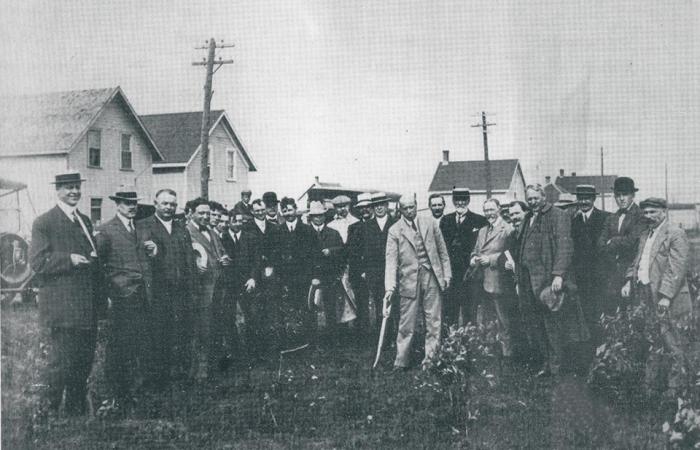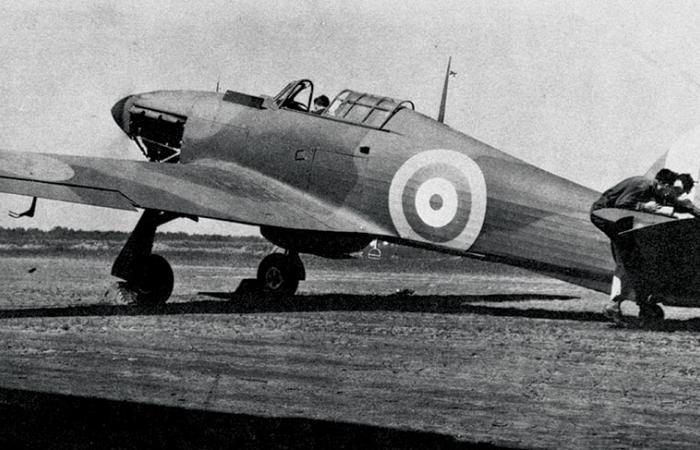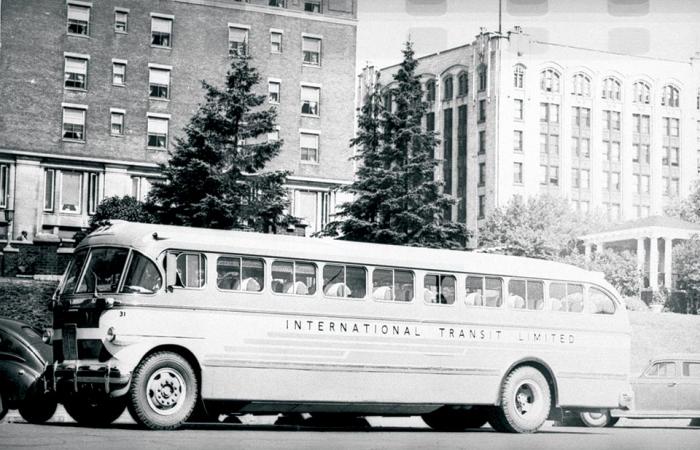When we think of the Bombardier plant here and it’s history, the first things that come to mind are the Hawker Hurricanes that were built here during WW II. We remember the 835 Helldivers made at Can Car for the US Navy and the many “Rosie the Riveters” who put them together. At the peak of production, over 1200 women were employed at Canadian Car & Foundry as welders and in shop jobs alone.No doubt Elsie MacGill comes to mind, she received a Master’s degree in Engineering in 1929 and worked in the manufacturing facility from 1938 -1943. She was also the first woman anywhere to design an airplane, the Maple Leaf II.
On July 17, 1912, 23 men including the mayors of Port Arthur and Fort William, along with representatives from the three railway manufacturing companies involved and a few spectators, gathered for a ceremonial sod turning in a far corner of West Fort William. The 30 hectare site would be the home of the Canadian Car & Foundry (CC&F) in the Lakehead. The CC&F was an amalgamation of the Canada Car Co. and the Dominion Car & Foundry Co. both of Montreal plus the Rhodes Curry Co. of Amhearst, NS. The CC&F plant would manufacture box cars.
The twin cities were experiencing a period of explosive growth with the combined population increasing from 8,086 in 1902 to 38,461 in 1912. There was great enthusiasm for the future, and the sod turning for the CC&F plant was a major civic event. It was scheduled to be built by July, 1913 at a cost of $1.5 million, the final price tag was $3 million. The plant began production in 1918 while the war was still going on. The Lakehead facility produced 14 box cars per day in March increasing to 32 in a single day on May 16.
Ships and shutdown
Also, in 1918, the Lakehead CC&F made a brief venture into ship building. It made twelve 44m long mine sweepers for the French Navy. The last ship they built was the 64m long E.D. Kingsley named after the Vancouver, BC company that had ordered it. Rail car orders dwindled and in March 1921 the last of the CC&F production staff was laid off. The Lakehead plant would remain closed for the next 16 years. During those years, a staff of no more than a dozen people maintained the property. On average, $821,000 was spent to keep the plant viable between 1922 to 1937. Farmers were allowed to graze their cattle during the day on the property for $2.00 a month. The basement of the administrative building was used as a laundry facility, and the CC&F land was home to a herd of 18 wild deer and one moose.
Over the time the Lakehead plant was shut down, the local politicians and the CC&F in Montreal worked to revive it. On August 3, 1937, the Lakehead CC&F commenced operations again to build Grumman G-23 fighter planes, not box cars. CC&F here realized it needed an airport. It bought Bishopsfield on Rosslyn Road and acquired an airport licence in May, 1938. They built one plane each for the Nicaraguan and Japanese air forces. Then they received an order for 40 planes to Spain at a cost of $36.500 each. The company pretended to sell them to Turkey to avoid a trade embargo. In all, 114 people were employed for this and the starting wage was $0.15 an hour. The depression had a downward effect on wages where people would work for a dollar a day. A milestone for the Lakehead CC&F was reached after 20 years of silence when the first airplane took flight on February 3, 1938.
Hurricanes and Helldivers
In 1939, war was looming in Europe. The British government was in need of fighter planes which could be manufactured away from the threat of bombardment. They selected the Lakehead CC&F to build Hawker Hurricanes as one of the plants to do it, thanks in large part to Port Arthur M.P. C.D. Howe’s efforts. At that time, a starting wage was $0.42 an hour. Hurricanes rolled off the assembly line from 1939 to 1943 at a coat of $25,000 each. A total of 1451 Hurricanes were manufactured here with the first 30 planes seeing action in the Battle of Britain. The rest saw action over the skies of Europe, the Middle East, India and Russia. In total, 14,000 Hurricanes were built during WWII with 10% being made here.
Just as the Hurricane contract was finishing, the US Navy commissioned the Lakehead CC&F plant to build Curtiss Helldivers at $60,000 a plane. They were a larger and more complex plane than the Hurricane, and they were still being designed as they rolled off the assembly line. There were thousands of design changes made by Curtiss during production. Because of the difficulties flying the plane, the US Navy pilots nicknamed the plane “The Beast.” By war’s end in 1945, Can Car had built 835 Helldivers.
The next challenge
The next challenge for the Lakehead CC&F was the transition to peacetime manufacturing. The plant managers were up to the task. Before the Helldiver contract had finished, the decision was made that the Lakehead CC&F would make buses. They partnered Can Car with ACF Brill, an experienced bus manufacturer. There is little doubt that this decision is why Can Car survives to this day. The downside was that, of the 7,000 people employed at CC&F at the height of the Helldiver contract, only 1,500 would be needed to make the buses. By November 5, 1947 CC&F had produced their 1,000th bus. These buses were sold to Victoria, Saskatoon, Regina, London and Toronto. In 1946, it made its first foreign sales to Cuba, South Africa and Colombia. Can Car built electric trolley buses too. In the time between 1947 and 1959, it sold 1,114 trolleys all across Canada and the United States. May 8, 1950 saw the 2,000th bus roll off the assembly line.
From 1949 to 1959, Can Car manufactured and repaired tanker rail cars. It was a good business, but hazardous work. During this period, 4,000 tankers were manufactured or repaired. In 1951, CC&F returned to making planes for the next five years. They built 270 Harvard trainers for the RCAF and 285 for the USAF, plus 125 Beach T-34 Mentor trainers for the US Air Force. Can Car also repaired and made spare parts for aircraft until 1956.
CC&F was sold to A.V. Roe Ltd in 1955 which was in turn owned by Hawker Siddeley of Britain. Can Car was pleased to be a part of a truly international company.
Work continued, but now Can Car would be making bi-level passenger rail cars and subway cars. In 1975 alone, GO Transit ordered 80 bi-level rail cars, Toronto ordered 134 subway cars, and CC&F received its first order for rail cars from outside Canada and the United States. The order was from Mexico.
Changing ownership
UTDC, acquired the Thunder Bay plant in 1984, but UTDC wasn’t a good fit for Can Car. In 1986, Lavalin bought out UTDC and things improved at CC&F, but it wasn’t until Bombardier acquired the plant that the situation resolved in 1992. To this day, Can Car makes rail cars just as it had when it first started
in 1912.
A credit to the fortitude
Can Car in Thunder Bay has survived for over 100 years by being diversified. It was always up to meeting a challenge to supply what was needed at the time and doing it with skill and efficiency. It is a credit to the fortitude of the many people who have worked at Can Car through the decades that the plant has come this far. With the continued resourcefulness of its employees, Can Car will be in operation for many years
to come.
I want to thank the following: A History of Can-Car by Gordon Burkowski, Thunder Bay Public Library, Thunder Bay Historical Museum, and the City of Thunder Bay archives.









